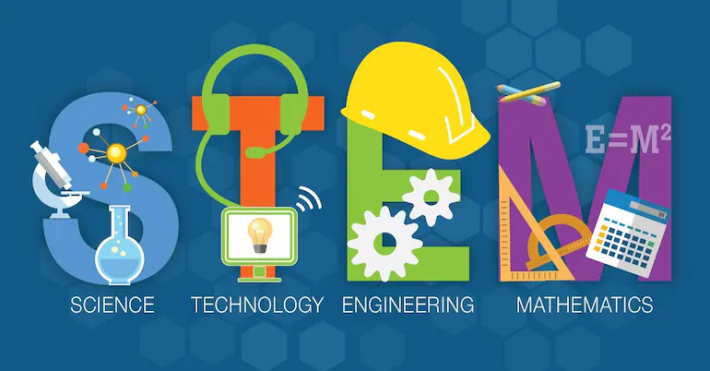STEM Occupation Definition is very simple. Science, technology, engineering, and mathematics together are known as STEM. The occupation has garnered a lot of attention over the last few years. This attention is based on the belief that the field’s innovation has played a significant role in creating new jobs and industries everywhere in the world.
Before you venture into this occupation, you can read this article on STEM occupation definition.
What is STEM Occupation Definition?
STEM occupation definition is a job in the fields of science, technology, engineering, or mathematics. If you have a foundation in these subjects, a career in STEM will let you solve your issues, conduct research, and develop new ideas. The professionals belonging to this field, work in a different setting, including in a laboratory, office, classroom, research facility, or out in the field.
STEM jobs need soft skills, such as
- Analysis
- Advanced STEM knowledge
- Problem-solving
- Attention to detail
- Communication
- Critical thinking
- Leadership
- Creativity
- Organization
Types of STEM Jobs
Another part of the STEM occupation definition is the types. Jobs in the field of STEM are spread across a wide range of career fields that include-
- Science Jobs: There are different branches of science, such as chemistry, biology, physical, medical science, psychology, social sciences, and computer science. So, the types of science jobs are- biochemists, environmental scientists, anthropologists, psychologists, and medical scientists. Focusing on science, the STEM jobs let you use research skills, critical thinking, and analytical skills to reach research-based conclusions and solve actual problems.
- Technological Jobs: Working in the field of technology lets you develop new systems and programs or software existing systems. The kind of jobs in the technology field are web developers, computer programmers, computer network architecture, software system developers, and computer systems analysts. For a career in technology, you have to use data and scientific reasoning to create solutions and strategies for solving many technological problems.
- Engineering Jobs: Engineers make the use of their technical skills and creativity to offer solutions for an extensive range of real-world issues. There are several engineering disciplines, such as electrical, mechanical, environmental, and civil engineering. The different types of engineering jobs are aerospace, civil, and chemical engineers.
- Mathematics Jobs: Mathematics includes various disciplines, including calculus, accounting, and economics. These disciplines use mathematics for deduction, reasoning, and problem-solving. The professionals belonging to this field analyze data, develop models, identify patterns, and offer creative data-based solutions.
The Best Examples of STEM Jobs
Here are the best STEM job examples you will come across-
- Technical writer
- Computer programmer
- Accountant
- Financial analyst
- Chemist
- Biologist
- Web developer
- Civil engineer
- System analyst
- Database administrator
- Database engineer
- Physician assistant
- Economist
- Mathematician
- Dentist
- Data scientist
Reasons You Should Consider a Career in STEM
Now that you know the STEM occupation definition, you should know the reason you should consider a career in STEM.
- You Get to Work on the Cutting Edge: STEM professionals are civil engineers, aerospace engineers, software developers, computer scientists, food scientists, material scientists, chemists, and astronomers. But it also includes math and science teachers. Every occupation we have mentioned can push your understanding of the universe and build the future universally. The professionals of the STEM field designed and developed the Hubble telescope to take a look into the universe, developed the internet, and built the world’s tallest building, and pushed our understanding of diseases and new medical treatments continually.
- You can have a STEM Career: Sure, no job is 100%, but due to the growing demand, professionals belonging to STEM fields are highly unlikely to be unemployed than all their non-STEM colleagues. The fact can eliminate hesitation for taking out student land for a master’s or undergraduate degree. A majority of the students that graduate with STEM degrees will find themselves employed immediately.
- There is Something for Everyone: The thing that ties all STEM fields together is the emphasis on solving issues and developing new knowledge. Thus, there is something for all. Think about where and how you like spending your time: would you prefer being in the field, is the laboratory exciting for you, are you interested in the human body, would you like deconstructing and constructing them? Geologists have to spend time outdoors, but chemists spend their time in the lab.
- You get to Learn Transferable Skills: Sure, it might be a little difficult to transition from being a software developer to a geologist, the primary focus on both rigorous approach and technical skill to problem-solving remain the same in every field of STEM. Moreover, science, math, and programming are universal languages, which enable teams from across the world to collaborate on difficult issues, letting individuals move away from one project to the other. Employer surveys show that hiring managers have an inclination for employees who can think analytically and solve problems.
STEM Education Statistics
Here is a quick look at some popular STEM statistics with details for each.
- It has been projected that STEM jobs will grow 8.8% between 2017 and 2029 with positions in engineering, computing, and advanced manufacturing.
- Software development employment will grow 22% in 2019-2029.
- Employment in STEM occupations has grown 79% as it increased from 9.7million to 17.3million.
- When it comes to STEM jobs, the average median hourly wage is $38.85 which is incredibly high in comparison to all other kinds of jobs in the US.
- Just 20% of the US high school graduates are ready for college-level courses in STEM majors.
- 2 out of 3 United States women say they weren’t encouraged to pursue their career in STEM.
Bottom Line
STEM is crucial and comes with many opportunities. After knowing the STEM occupation definition, more people should prepare themselves to cater to such opportunities. According to experts, even traditional non-technical industries will depend on professionals with STEM skills since technology turns out to be more pervasive. Some STEM professionals of present times did not even exist 10 years back and after 10 years, it can be expected there will be more jobs than you can imagine.



